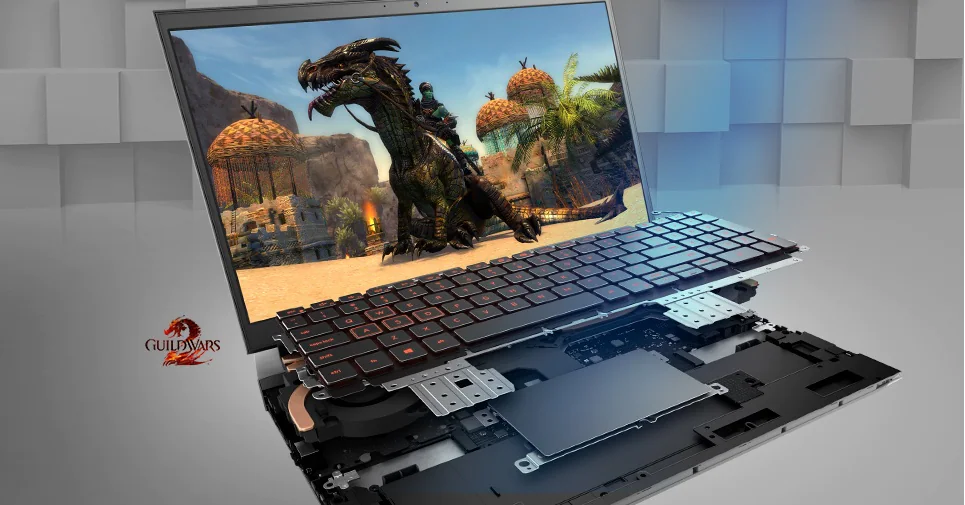Table of Contents
In early October 2021, gaming enthusiasts eagerly welcomed the latest addition to the successful Nintendo Switch family: the Nintendo Switch OLED. This new model, following in the footsteps of its predecessor, introduces a range of improvements and notable features aimed at providing a more immersive and satisfying gaming experience. In the following article, we will explore in detail the key differences that set the Nintendo Switch OLED apart from its predecessor.
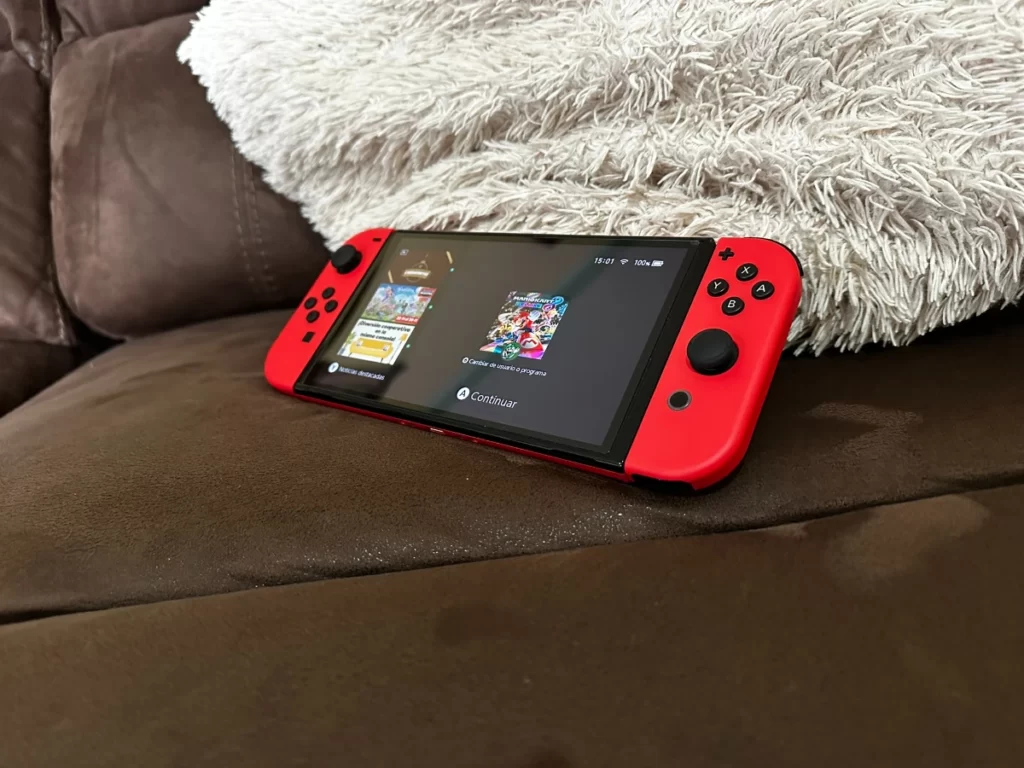
Stunning OLED Display:
The most striking aspect of the Nintendo Switch OLED is, as its name suggests, the 7-inch or 17.78 cm OLED screen. This change represents a significant leap in terms of size compared to previous versions. OLED technology improves visual quality with particularly vivid and brighter colors. Even though the screen resolution stays at 720 pixels, the gaming experience is enhanced, particularly when utilizing the console’s extensive library of games. It is worth noting that, in TV mode, the resolution remains at 1080 pixels, maintaining the image quality of the previous version.
Improved Semi-Portable Stand:
The design of the stand for the semi-portable mode has been significantly improved. With its more robust and movable stand, the Nintendo Switch OLED offers more stability and customization options for the viewing angle. This adjustment not only reduces the likelihood of accidental stand falls but also enhances comfort during gameplay in semi-portable mode. Additionally, a MicroSD card slot is incorporated under the stand, allowing for memory expansion up to 2 TB, depending on the card capacity and the console’s existing internal memory.
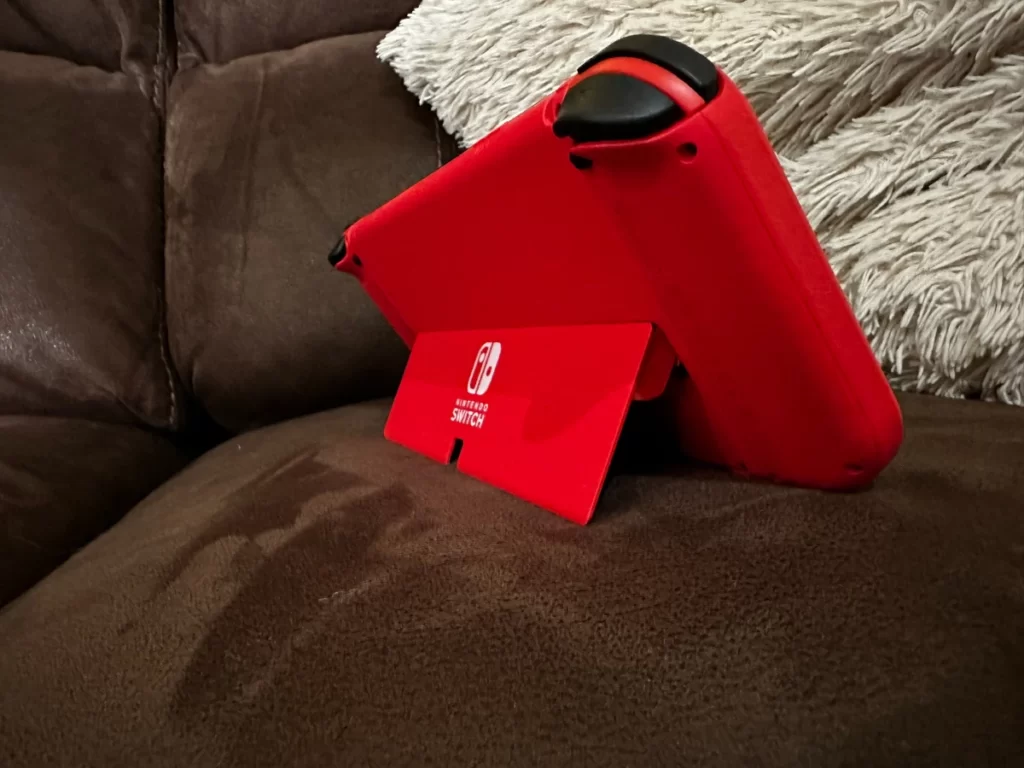
Enhanced Dock:
The Nintendo Switch OLED dock also undergoes notable changes. With the addition of an integrated LAN port, there is no longer a need to buy a separate adapter to enhance online modes, game download speeds, and internet connections. The cover that conceals the console’s ports is fully removable, providing more convenient access. When setting it for play, there is less chance of scratching the screen than with the earlier dock. Although this aspect has been improved, using a screen protector is still recommended to prevent potential damage.

Increased Storage Capacity:
The Nintendo Switch OLED‘s internal storage capacity doubles to 64 GB from 32 GB, double that of its predecessor. This improvement provides more space for both digital and physical games. However, it is important to note that part of the internal memory is reserved for system requirements. Eventually, as the quantity of games stored grows, it might be essential to purchase an extra MicroSD card in order to increase storage space.
Audio Enhancement:
In the audio realm, the Nintendo Switch OLED elevates quality with improved stereo speakers. In both portable and semi-portable modes, these offer more immersive and superior-quality sound. Playing without headphones makes them especially noticeable for their sharper and more immersive sound experience. Discerning gamers will notably appreciate this improvement.
Enhanced Controls:
Controls also receive substantial improvements in terms of quality and durability. The likelihood of joystick issues, such as the well-known “drift,” is considerably reduced. Additionally, the material of the controls is upgraded, offering a sense of higher quality and a more comfortable texture during gameplay.
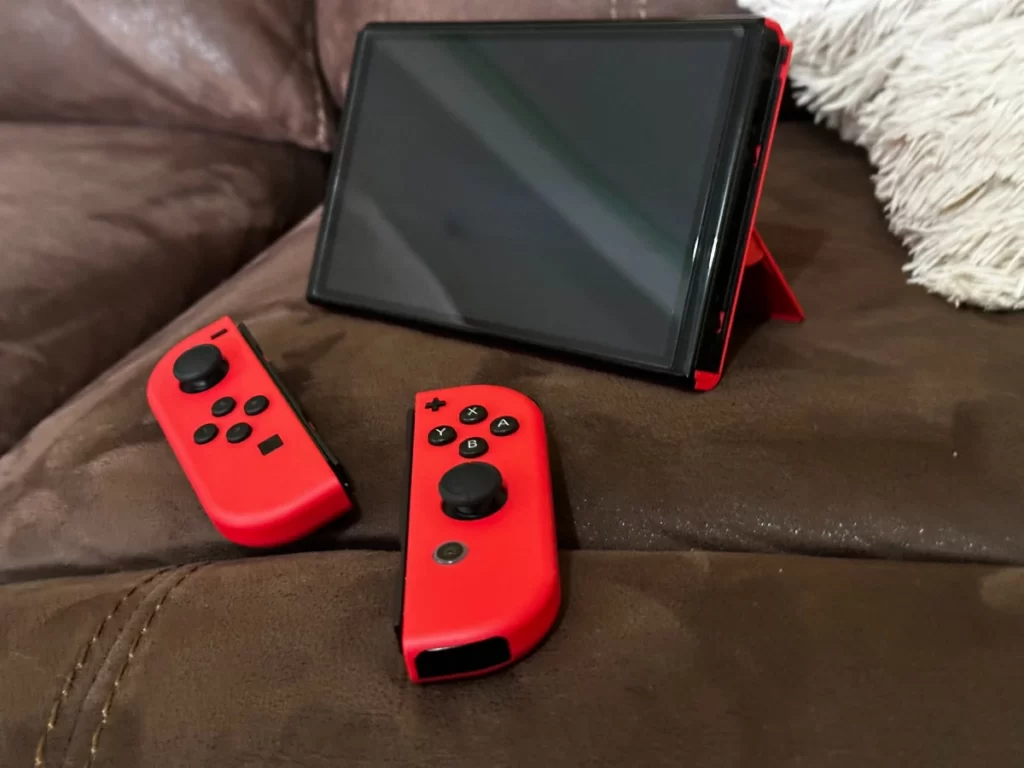
Internal Components and Battery:
Regarding internal components, the battery life of the Nintendo Switch OLED falls in the range of 4.5 to 9 hours on average, depending on the game and its demands on the console. The console’s full charge takes approximately 3 hours in standby mode. It’s important to mention that the Nintendo Switch OLED still uses the same NVIDIA Custom Tegra processor as in the previous versions, so there aren’t any significant improvements in this aspect.
Buyers’ Opinion:
Amazon buyers have mostly positive opinions about the Nintendo Switch OLED model. Users love the amazing gaming experience, the immersive visuals with the new screen, and the flexibility to easily switch between TV and portable modes. They also praise the Joy-Con controllers for being comfortable and providing accurate control.
The vast game library, catering to diverse gaming preferences, along with the added perks of the Nintendo Switch online service, receives notable acclaim. This service provides access to classic NES and Super NES games, as well as online multiplayer functionality. The neon red and blue color scheme adds a vibrant and stylish touch to the console, and there are also other versions such as Mario Edition, Zelda Edition, and Splatoon Edition.
The enhanced OLED screen of the Nintendo Switch is a significant upgrade for many gamers, offering vibrant colors, deep blacks, and an overall improved gaming experience. Users value the Switch’s portability, particularly in portable mode, which enables them to play anywhere.
Some users specifically mention the appeal of the Nintendo Switch for traveling and playing on the go, making it the preferred choice over other consoles. Positive comments extend to the build quality, with users expressing satisfaction with the overall design and functionality.
Although most reviews are positive, some buyers express concerns about game prices, the quality of Joy-Con controllers, and issues with Nintendo Switch online capabilities. Some users also share suggestions for possible improvements, such as an increase in processing power for future models.
Despite a few minor criticisms, the prevailing sentiment is overwhelmingly positive, portraying the Nintendo Switch OLED as a superb gaming device that seamlessly combines portability, versatility, and breathtaking visuals to cater to a diverse array of gaming preferences.
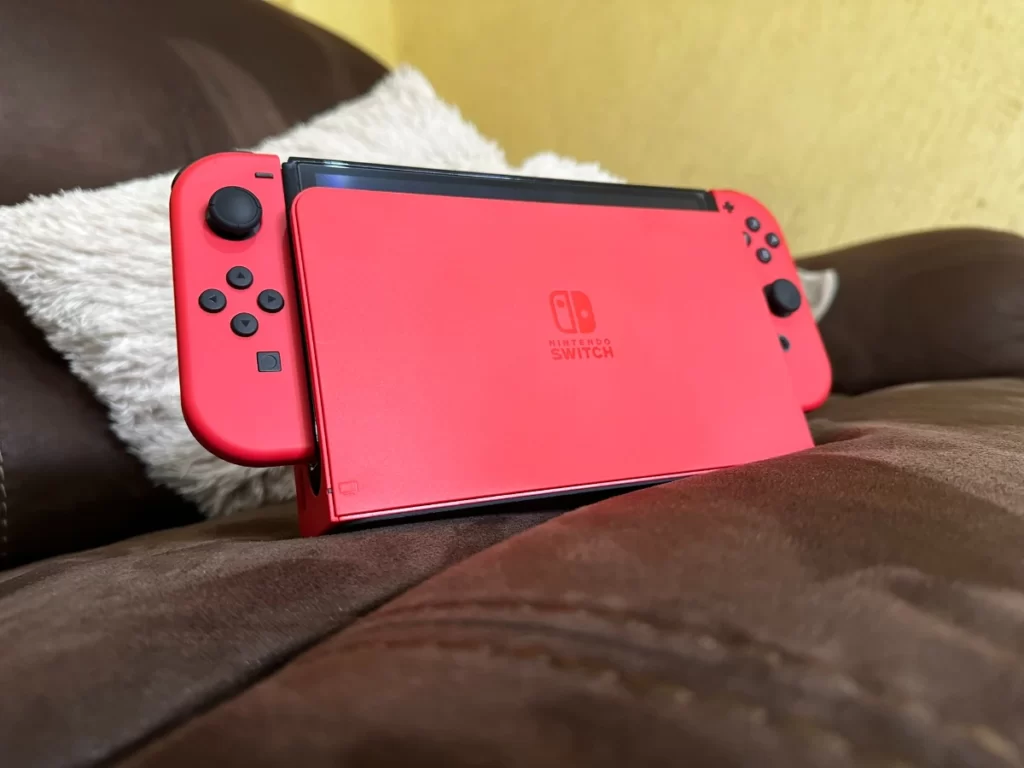
Conclusion:
Despite some minor critiques, the overall consensus is overwhelmingly positive, depicting the Nintendo Switch OLED as an exceptional gaming device that seamlessly blends portability, versatility, and stunning visuals to cater to a diverse range of gaming preferences. The OLED screen, adjustable stand, enhanced dock, and increased internal storage capacity are highlights that enhance the gaming experience. Although some challenges persist, such as the processor not undergoing significant changes and the eventual need to expand memory, the Nintendo Switch OLED remains an attractive option for Nintendo gaming enthusiasts.
For those who already own a previous model of the Nintendo Switch, the decision to upgrade will depend on the importance they assign to the mentioned improvements. Yet, for those in pursuit of the utmost advanced gaming experience, a prudent choice might involve anticipating the arrival of the next Nintendo console, projected for mid-2024. This upcoming release holds the promise of introducing multiple enhancements beyond the current models.
The Review
Switch OLED
The Nintendo Switch OLED revolutionizes the gaming landscape through its 7-inch OLED screen, vivid colors, and enhanced stand. Featuring a redesigned dock, doubled internal storage at 64 GB, improved stereo speakers, more robust controls, and a battery life extending up to 9 hours, it delivers an elevated level of immersion for an enhanced gaming experience. Although the processor undergoes no substantial changes, the console stands out with its evolution in multiple key aspects, establishing itself as an appealing choice for Nintendo gaming enthusiasts.
PROS
- 7-inch OLED screen with more vivid colors and deeper blacks
- Thinner bezels
- Improved kickstand
- Larger internal storage (64 GB)
- White color option
CONS
- High price
- No improvements in TV mode
- No performance improvements
Review Breakdown
-
Design
-
Screen
-
Performance
-
Battery
-
Connectivity
-
Audio








